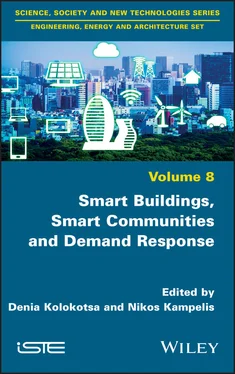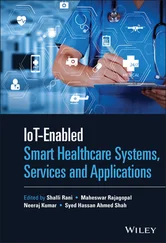5 Preface
6 Nomenclature
7 Begin Reading
8 Appendix
9 References
10 Index
11 End User License Agreement
1 v
2 iii
3 iv
4 ix
5 x
6 xi
7 xii
8 xiii
9 xv
10 xvi
11 xvii
12 xviii
13 xix
14 xx
15 1
16 2
17 3
18 4
19 5
20 6
21 7
22 8
23 9
24 10
25 11
26 12
27 13
28 14
29 15
30 16
31 17
32 18
33 19
34 20
35 21
36 22
37 23
38 24
39 25
40 26
41 27
42 28
43 29
44 30
45 31
46 32
47 33
48 34
49 35
50 37
51 38
52 39
53 40
54 41
55 42
56 43
57 44
58 45
59 46
60 47
61 48
62 49
63 50
64 51
65 52
66 53
67 54
68 55
69 56
70 57
71 58
72 59
73 60
74 61
75 62
76 63
77 64
78 65
79 66
80 67
81 68
82 69
83 70
84 71
85 72
86 73
87 74
88 75
89 76
90 77
91 78
92 79
93 80
94 81
95 82
96 83
97 84
98 85
99 86
100 87
101 88
102 89
103 90
104 91
105 92
106 93
107 95
108 96
109 97
110 98
111 99
112 100
113 101
114 102
115 103
116 104
117 105
118 106
119 107
120 108
121 109
122 110
123 111
124 112
125 113
126 114
127 115
128 116
129 117
130 118
131 119
132 120
133 121
134 122
135 123
136 124
137 125
138 126
139 127
140 128
141 129
142 130
143 131
144 132
145 133
146 134
147 135
148 136
149 137
150 138
151 139
152 140
153 141
154 143
155 144
156 145
157 147
158 148
159 149
160 150
161 151
162 152
163 153
164 154
165 155
166 156
167 157
168 158
169 159
170 160
171 161
172 162
173 163
174 164
175 165
176 167
177 168
178 169
179 170
180 171
181 172
182 173
183 174
184 175
185 176
186 177
187 178
Engineering, Energy and Architecture Set
coordinated by Lazaros E Mavromatidis
Volume 8
Smart Buildings, Smart Communities and Demand Response
Edited by
Denia Kolokotsa Nikos Kampelis

First published 2020 in Great Britain and the United States by ISTE Ltd and John Wiley & Sons, Inc.
Apart from any fair dealing for the purposes of research or private study, or criticism or review, as permitted under the Copyright, Designs and Patents Act 1988, this publication may only be reproduced, stored or transmitted, in any form or by any means, with the prior permission in writing of the publishers, or in the case of reprographic reproduction in accordance with the terms and licenses issued by the CLA. Enquiries concerning reproduction outside these terms should be sent to the publishers at the undermentioned address:
ISTE Ltd
27-37 St George’s Road
London SW19 4EU
UK
www.iste.co.uk
John Wiley & Sons, Inc.
111 River Street
Hoboken, NJ 07030
USA
www.wiley.com
© ISTE Ltd 2020
The rights of Denia Kolokotsa and Nikos Kampelis to be identified as the authors of this work have been asserted by them in accordance with the Copyright, Designs and Patents Act 1988.
Library of Congress Control Number: 2020945010
British Library Cataloguing-in-Publication Data
A CIP record for this book is available from the British Library
ISBN 978-1-78630-426-1
Demand response (DR) is associated with significant environmental and economic benefits when looking at how the electricity grid can operate optimally. Adding flexibility in power consumption provides a sound basis for improving the grid’s environmental performance and efficiency. For example, reducing peak loads at grid level could lead to a lower level of operation for generation plants with a high running cost, low efficiency and low environmental performance. Furthermore, as the storage of electricity is bound to technical and economic constraints, the absorption of excess electricity from renewable energy sources is feasible through a demand following generation concept.
DR is gradually gaining ground with respect to (1) the reduction of peak loads; (2) grid balancing; and (3) dealing with the volatility of renewable energy sources (RES). In this context, demand side management techniques such as peak clipping, valley filling, load shifting and flexible load shape are already being employed. Also, various DR programs are being designed and implemented, including critical peak pricing, capacity bidding, thermostat/direct load control and fast DR dispatch/ancillary services.
In DR, the consumer becomes a prosumer with an important active role in the exchange of energy on an hourly basis. This transition calls for high environmental awareness and new tools and services which will improve the dynamic, as well as secure multidirectional exchange of energy and data. Overall, DR is identified as an important field for technological and market innovations aligned with climate change mitigation policies and the transition to sustainable smart grids in the foreseeable future.
This book provides an insight into various intrinsic aspects related to the assessment of DR potential, at the building and the community level. Issues pertaining to the use of building energy models, compared to actual performance, and smart monitoring are addressed. Furthermore, temperature set-point adjustment, which is a standard practice in controlling heating, ventilation and air conditioning (HVAC) systems, is assessed with the aid of simulation, to investigate the optimality in multidynamic systems’ operation. On the other hand, the book focuses on load shifting optimization at the community level on the basis of time of use (ToU) and real-time pricing (RTP). The rationale behind this is that energy markets should be operated in a transparent manner inducing higher efficiency of power grids through the promotion of renewable energy. In this context, it is foreseen that a high penetration of RES, given their minimal operational expenses and environmental advantages, should be reflected in the time slots of low costs and consumer prices. In this way, all consumers will be provided with a clear roadmap and the necessary motivational factors in order to adjust our consumption when possible and take advantage of electric energy availability from clean resources.
This book focuses on near-zero energy buildings (NZEBs), smart communities and microgrids. Therefore, on one hand, it would be valuable for experts, professionals and postgraduates with an interest in (1) highly efficient buildings and communities; (2) smart monitoring systems; and (3) building energy modeling. On the other hand, the book would be beneficial for professionals with an interest in building or community level power predictions and optimization, as well as about how such tools and techniques can be utilized to evaluate DR at the building and/or district level.
Читать дальше













